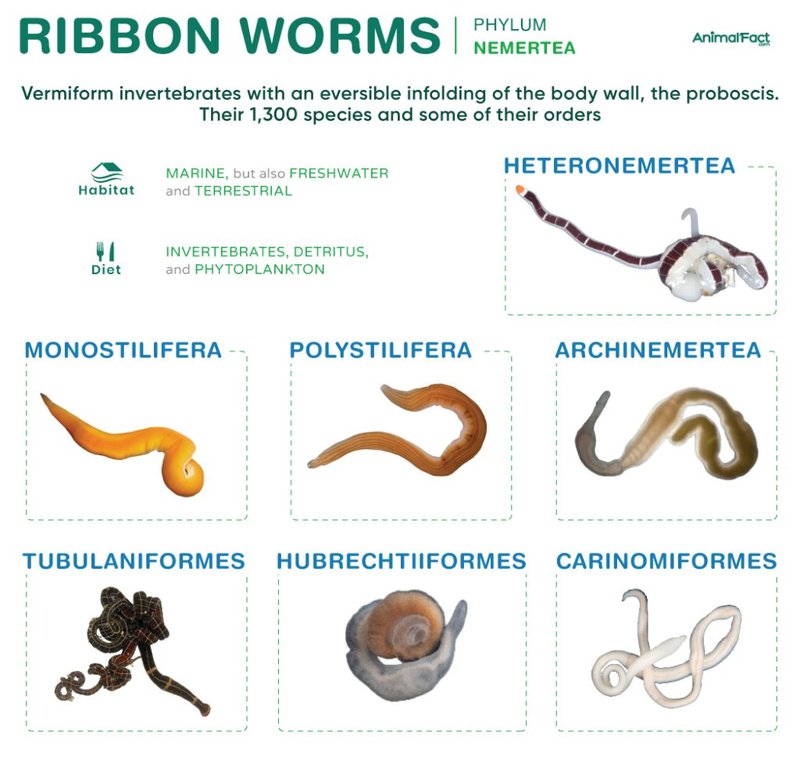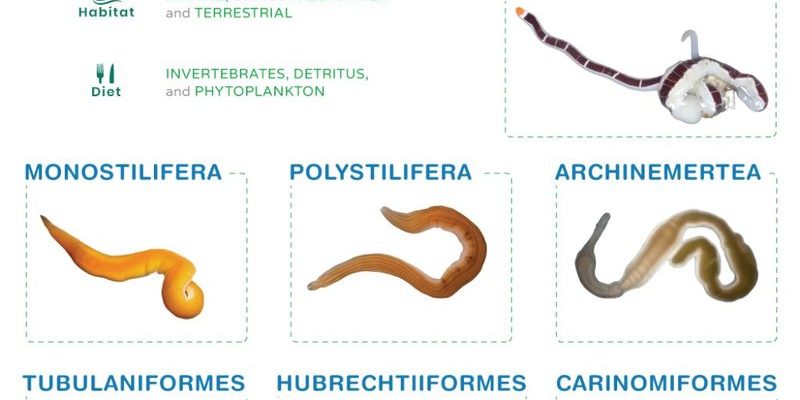
Imagine ribbon worms as the flashy acrobats of the worm world, with their long, stretchy bodies and vibrant colors. On the other hand, annelid worms are like the hardworking builders, known for their segmented bodies and intricate lifestyles. While both groups play critical roles in their ecosystems, their characteristics and behaviors can be quite different. So, let’s get into the nitty-gritty and explore these two wormy worlds!
Understanding Ribbon Worms
Ribbon worms, or nemerteans, are a unique group of worms that are often found in marine environments. They are known for their long, flat bodies that can be incredibly stretchy—some species can reach up to 30 meters in length! You might be wondering what makes them stand out. Here’s the thing: these worms have a fascinating feeding mechanism. They possess a specialized structure called a **proboscis**, which can be ejected to capture prey, like small fish and crustaceans. It’s like having a secret weapon that shoots out to snag dinner!
Their bodies are also covered in a slimy layer that helps them glide smoothly in water or burrow into the sand. Ribbon worms come in various colors, often serving as camouflage or warning signals to predators. While they can be found in various habitats, they thrive in coastal areas, giving them a front-row seat to all the drama of the ocean.
Exploring Annelid Worms
Now let’s turn our attention to annelid worms, which include the more familiar earthworms and marine polychaetes. These worms are known for their **segmented bodies**, which means their bodies are divided into multiple sections or segments. Think of it like a train, where each car works together to help the whole thing move forward. This segmentation plays a crucial role in their mobility and flexibility.
Annelids are incredibly versatile and can be found in a variety of environments—from soil to freshwater and marine ecosystems. Their segmented structure helps them burrow and navigate through various terrains. They also have a closed circulatory system, which is quite advanced for worms. This system helps them transport nutrients and oxygen efficiently, making them quite the overachievers in the worm world!
Key Differences Between Ribbon Worms and Annelid Worms
So, what are the main differences between ribbon worms and annelid worms? Although both are fascinating creatures, they vary drastically in their anatomy and behavior. Here’s a quick breakdown:
- Body Structure: Ribbon worms are long and flat, while annelid worms are segmented and cylindrical.
- Feeding Mechanisms: Ribbon worms use a proboscis to catch prey, while annelids generally have a mouth and can be detritivores, feeding on decomposing organic matter.
- Habitat: Ribbon worms predominantly live in marine environments, whereas annelids can thrive in terrestrial, freshwater, and marine habitats.
These differences highlight how both groups have adapted to their environments. While ribbon worms have evolved specialized feeding methods for their aquatic lifestyle, annelids have developed segmentation that helps with movement in diverse settings.
Habitats and Distribution
Ribbon worms are primarily found in saltwater environments. They love to hide in sandy or muddy bottoms of oceans and estuaries. Their habitats often play a crucial role in their survival, as they rely on the availability of prey. Because they tend to be more sensitive to changes in their environment, they serve as excellent bioindicators. This means that studying them can give scientists clues about the health of marine ecosystems.
In contrast, annelid worms have a broader range of habitats. Earthworms, for example, are significant players in soil health, helping to aerate and enrich it through their natural decomposition processes. Polychaete annelids, on the other hand, thrive in marine environments and can be found in coral reefs, seabeds, and even in deep-sea habitats. This adaptability speaks to their success as a group and their importance in various ecosystems.
Reproductive Strategies
When it comes to reproduction, ribbon and annelid worms take different approaches. Ribbon worms often reproduce sexually, with separate sexes that release eggs and sperm into the water. Once fertilization occurs, eggs develop into larvae and float in the ocean until they settle to the seabed. This method increases their chances of survival, as it allows for genetic diversity.
Annelids, however, can be sexual or asexual depending on the species. Earthworms, for instance, are hermaphrodites, meaning each individual has both male and female reproductive organs. They still require a mate for fertilization, but this setup increases their chances of reproducing in environments where finding a partner might be challenging. Some species can even regenerate lost segments, boosting their survival odds.
Ecological Roles
Both ribbon worms and annelid worms play essential roles in their ecosystems. Ribbon worms, as predators, help maintain the balance in marine food webs. By controlling populations of smaller organisms, they can affect the availability of food resources for larger marine animals.
Annelid worms, on the other hand, are critical for soil health and nutrient cycling. Earthworms aerate the soil by burrowing, which allows water and nutrients to penetrate deeper. This makes the soil more suitable for plant growth. Additionally, they help decompose organic matter, returning vital nutrients to the ecosystem. Their presence is often a sign of healthy, thriving ecosystems, whether on land or in the sea.
In summary, while ribbon worms and annelid worms may both be classified as worms, they have distinctly different characteristics and roles in their ecosystems. Ribbon worms, with their striking bodies and unique feeding mechanisms, stand out in marine environments, while annelids, with their segmented structures and adaptability, play vital roles on land and in water. Understanding these differences not only helps us appreciate the diversity of life on Earth but also highlights the importance of preserving these fascinating creatures and their habitats. So next time you see a worm, take a moment to think about the incredible world of ribbon and annelid worms!

